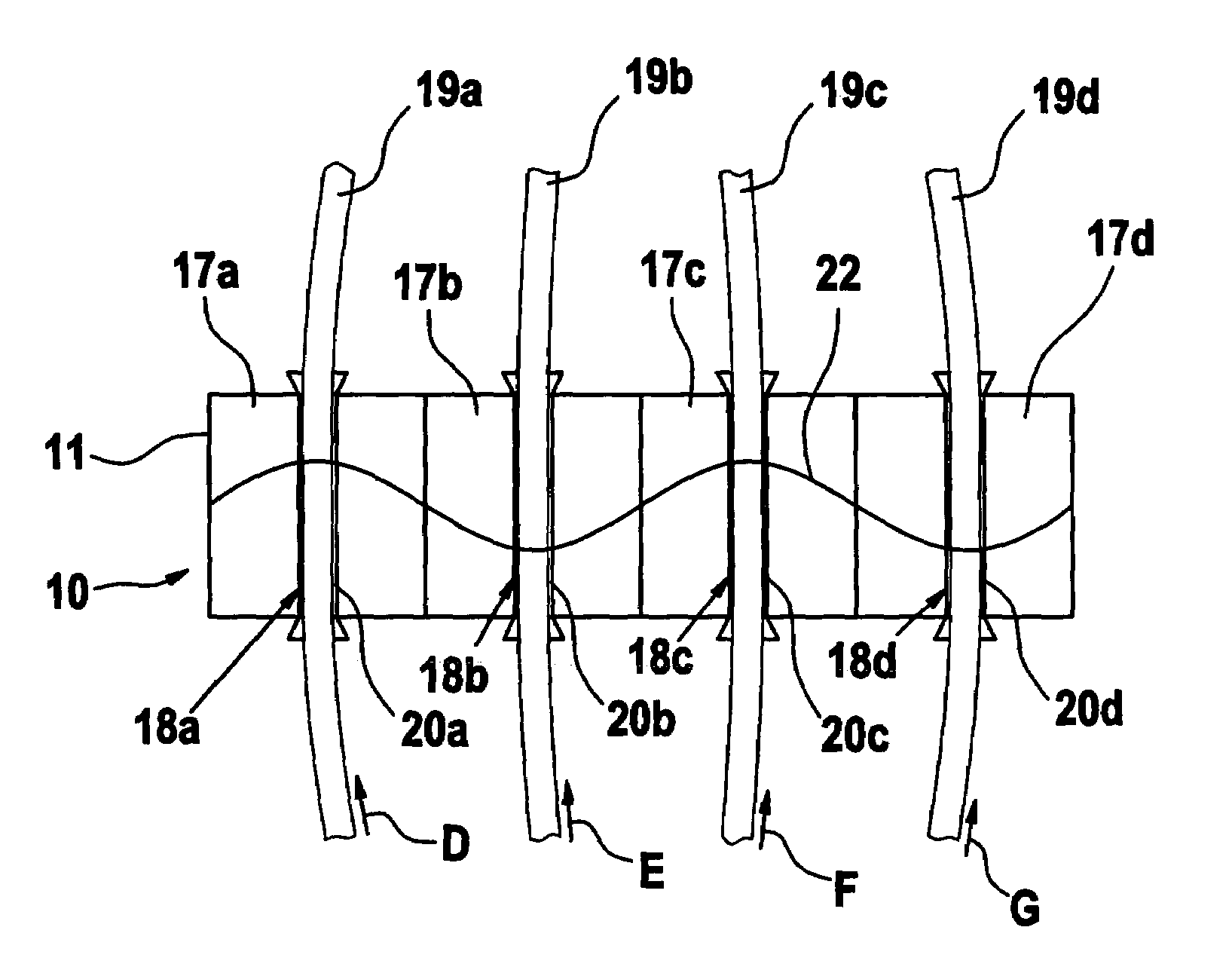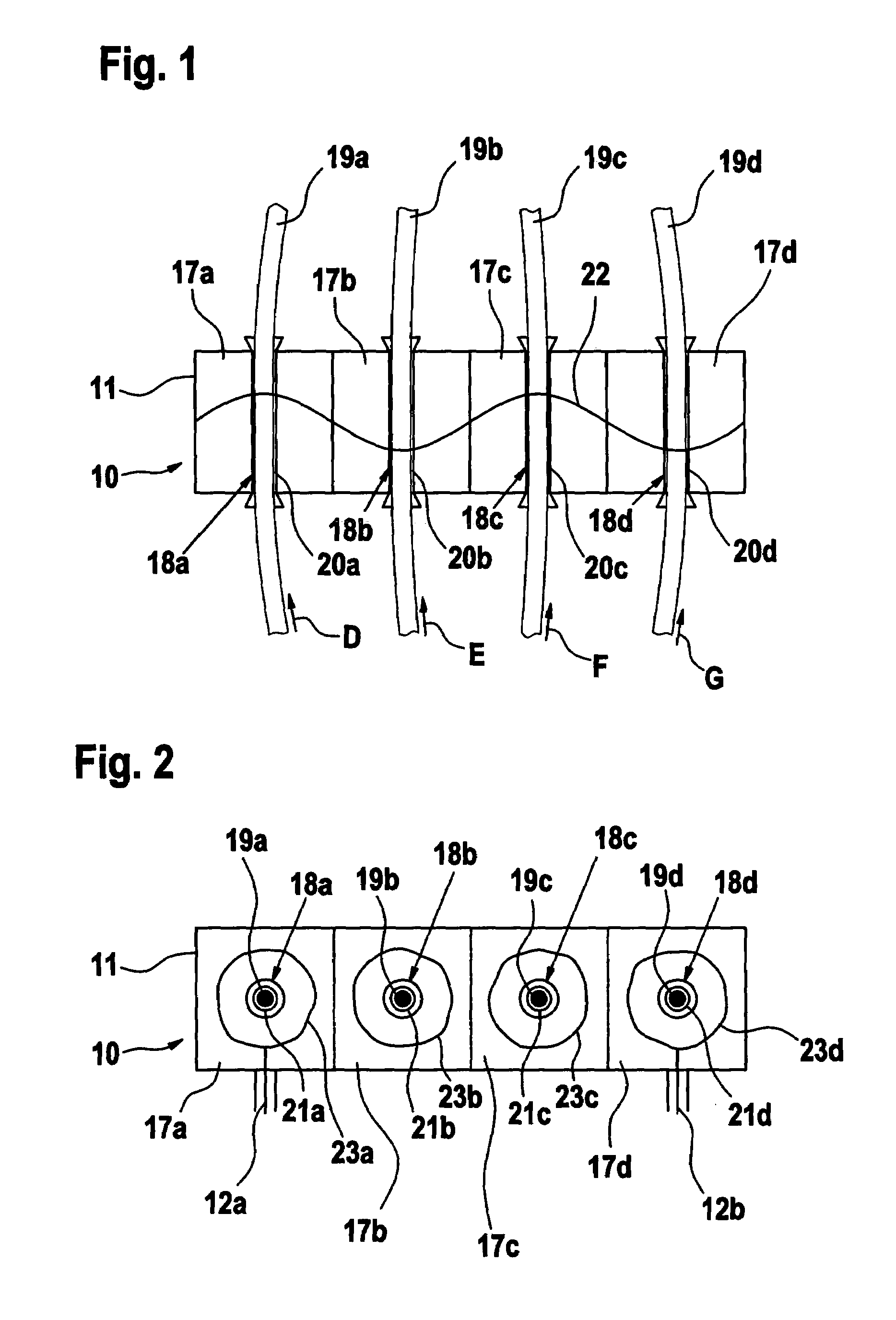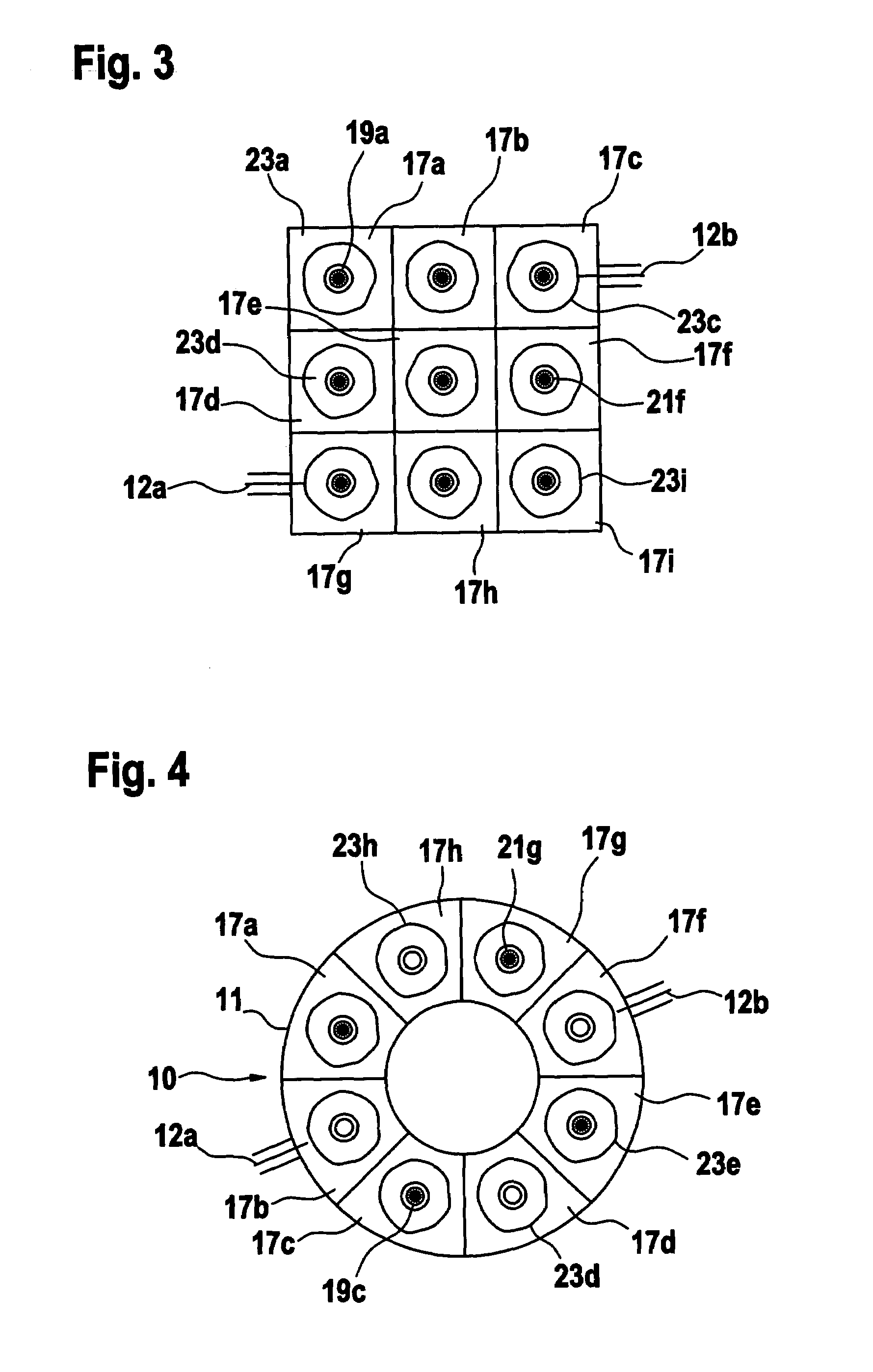Microwave sensor for measuring a dielectric property of a product
a dielectric property and microwave sensor technology, applied in the direction of material analysis using microwave means, safety devices for fibre treatment, lap-winding devices, etc., can solve the problem of systematic errors, limited mass loading of the resonator in the region of high field energy, and the sensing of the product over a relatively large dimension, so as to reduce the mass loading of the resonator in relation to the total energy stored in the resonator, improve the measurement accuracy, and improve the effect of mass loading
- Summary
- Abstract
- Description
- Claims
- Application Information
AI Technical Summary
Benefits of technology
Problems solved by technology
Method used
Image
Examples
Embodiment Construction
[0043]With reference to FIG. 1, a microwave sensor 10 comprises a cavity resonator 11, in which a standing microwave field is generated. The coupling and decoupling of the microwave field is effected by means of coupling devices 12. Microwaves are generated by means of a generator 14 controlled by a computer 13 and are relayed by means of a line to the coupling device 12a. A microwave signal is decoupled from the resonator 11 via the coupling device 12b and fed by means of a line to an analyser 15, the output signal of which can be processed by the computer 13. Generator 14, analyser 15 and computer 13 are expediently combined in one measuring unit 16 (cf. FIG. 8). The arrows D, E, F and G indicate the direction of flow of the material.
[0044]The resonator 11 has a plurality of resonator sections 17a, 17b, 17c, . . . . The division into different resonator sections is indicated in the Figures by broken lines. FIGS. 1,2, 5, 6, 7 and 9 each relate to elongate rectangular cavity resonat...
PUM
| Property | Measurement | Unit |
|---|---|---|
| speed | aaaaa | aaaaa |
| dielectric property | aaaaa | aaaaa |
| microwave field | aaaaa | aaaaa |
Abstract
Description
Claims
Application Information
 Login to View More
Login to View More - R&D
- Intellectual Property
- Life Sciences
- Materials
- Tech Scout
- Unparalleled Data Quality
- Higher Quality Content
- 60% Fewer Hallucinations
Browse by: Latest US Patents, China's latest patents, Technical Efficacy Thesaurus, Application Domain, Technology Topic, Popular Technical Reports.
© 2025 PatSnap. All rights reserved.Legal|Privacy policy|Modern Slavery Act Transparency Statement|Sitemap|About US| Contact US: help@patsnap.com



